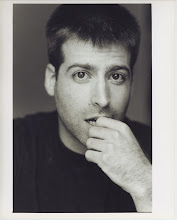Heidegger, Martin. “The Fundamental Discoveries of Phenomenology, its Principle, and the Clarification of its Name.” In Moran, Dermot and Timothy Mooney (eds.) The Phenomenology Reader. New York: Routledge, 2002.
This chapter is based on a lecture Heidegger delivered in 1925 in which he explicates phenomenology’s main concepts, specifically as a response to critique from some of his contemporary philosophers. As part of his attempt to clarify the basic notions used in phenomenology, his explanation focuses on three principle terms – intentionality, categorical intuition and the original sense of the a priori (Heidegger explenation of the third is not included in this edition of he lecture). He particularly tries to clarify how Husserl’s phenomenology and use of these terms differs from the way they were used by Brentano, who originally established them as part of his psychological theories.
Intentionality, according to Heidegger, is the direct and unmediated perceptual contact of our body/self with objects in the world. He specifically stresses that intentionality is not an active part of the psychic or of the representation of things in the world, but rather a structural principle of perception that connects with the object that is perceived as such. It is not, however, an independent factor that connects one’s being with the world to enable experience and is thus between them; it is, in a sense, what experience is or its direction (broadly speaking). Through intentionality we come in contact with the un-interpreted presence of things.
Heidegger goes on to show how knowledge is built out of representation of things in the world, which is the given-ness of things to perception. When perceiving a chair, for example, we may become aware of how hard its surface is. This intentionality presents the hardness of the chair to us as a factual aspect of the chair. Through such intentionalities we come to know the world and the world is present to us. Representation, moreover, is how reality itself is perceived through intentionality. It is always a re-presentation of something that is real and that exists. There is no separation here between what is being perceived, its perception and its representation. They are all intentionally connected. Appearances, therefore, are real things in the world and not psychic or mental phenomena.
There are, however, various kinds of intentionality. “Empty intending”, for example, is the representation of things that are not present here and now. Yet, it is still the intending of real things. For instance, through remembering we recall a perceptual experience of an existing thing. When an empty intentionality is fulfilled, when the perception of an object we imagined is confronted with the perception of the object when it is present, an evidential truth is created. The apprehension of the present object that is physically there is called intuition. The disclosure of truth can only occur through intuition. Truth in its most basic form arises when a presumed reality (through empty intentionality) is identical to its intuited reality. The basis of truth, then, is in being in touch with things in the world as a perceptual experience. Knowing the truth, therefore, means living in the truth. From this sense of truth comes truth that is the act of proving, the intentionality towards truth that is embedded in knowledge. The truth that arises as a result of these two forms of truth—that are, in fact, always intertwined—is the factual basis of being in the world.

1 comment:
Great job here explaining intentionality. This should be a helpful concept for you. I think that you can continue to think about how "representation" functions as a concept for Heidegger. You're almost there when you break the term into two parts: re-presentation (a projection). The key here is to identify the role of framing that comes in with representation, the ordering of the world and perspectival setting of the world before our gaze.
Post a Comment